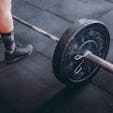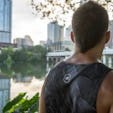Darth Vader, Hannibal Lecter, The Joker¦ all were iconic movie villains. But they’ve got nothing on William “Billy” Zabka, who played perhaps the most recognizable douchebags of 80s cinema—most notably in the original Karate Kid, where he swept the leg, cried “no mercy,” and ran Ralph Macchio off a hill on his bike.
While Zabka became infamous for his many turns as a WASPy jock bully, the truth is, he isn’t really a jerk. But he does actually know karate. And when it was time to dust off his gi and black headband to reprise his role as Johnny Lawrence for the Netflix series Cobra Kai (now in its sixth season), he called Hollywood trainer Chad Landers to help him get in shape.
We talked to Landers about how he trained the then 52 year-old Zabka to kick ass again after nearly 40 years, and the techniques he uses to help his other celebrity clients steal the show in nude scenes.
“I Trained William Zabka for Cobra Kai”: Q&A With Chad Landers
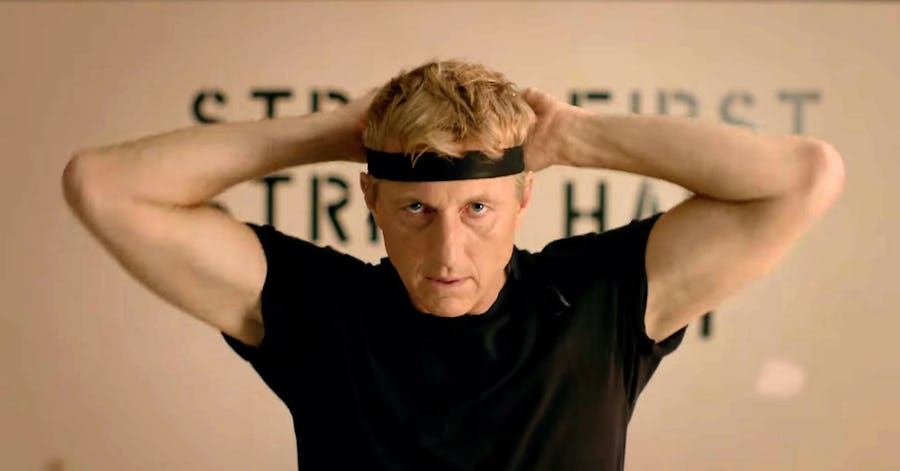
Onnit: First off, we have to know: Did Zabka wear the black headband during your workouts?
Chad Landers: No [laughs], but the very first time he came into the gym, I played the montage song from the first Karate Kid movie, “You’re The Best.” I had that playing in the background when he walked in. So I set the tone for everything right there. He thought that was hilarious. But I had known him for a while before I started training him. I probably wouldn’t have done that if I hadn’t known him beforehand!
What kind of shape was Zabka in when he started with you?
He was in good shape. A lot of people don’t realize that Billy wrestled in high school and had trained karate for real for years after Karate Kid, so it’s not like he had let himself go for the last 30 years. It’s just that when you’re going to be on camera, the requirements are a little different. The camera lies to a degree. So you’re always better off being a little bit leaner than not when you’re shooting a movie or TV show. Billy just wanted to make sure he was putting his best foot forward.
In an interview with Men’s Health, Zabka said you helped him lose 20 pounds in two weeks.
Billy was being generous [laughs]. I only had four to six weeks to train with him, and I guess he lost the bulk of that weight in the first two or three weeks.
How was the training set up?
We trained three to four days a week, which is about as much time as I get with any actor. Most of them pay for training themselves, and they don’t have a lot of time to spare. In that case, I usually do full-body workouts that cover a push exercise, a pull, and some leg exercise. I’ll intersperse the strength training with interval cardio, and then do some assistance exercises at the end—like curls, lateral raises, and other isolation lifts. For instance, I’ll have them do bench presses for maybe 5 sets of 5, resting two to three minutes between sets, and then do a 400-meter run on the treadmill. Then go on to hex-bar deadlifts followed by sprints on the Airdyne bike. I don’t like to do strength and cardio exercises as a circuit. I like the strength training to be done as heavy as possible, so I let them recover between sets, and then do the cardio afterward. That really works well for getting people cut up.
Did you have to make any modifications due to Zabka’s age?
Not really. He didn’t have any injuries, luckily. He came in ready to rock. If there’s a safe alternative to a risky exercise, I always take it, because if I hurt somebody in the gym and the movie they’re making has to shut down production as a result, my reputation is done. A lot of trainers try to hit an actor with hours of training a day for six days a week, but there’s no way Billy could have recovered from that. Most people couldn’t.

Did you do any training to specifically prepare him for his fight scenes?
Yes. One thing we did quite a bit of was single-leg training, because I knew he was going to do a lot of kicking. So we did stepups, reverse lunges. Also, I didn’t know how the camera crew was going to set up their shots. I didn’t want him to only be able to kick with his right leg if they needed him to kick with his left to get a certain shot. I didn’t want to risk him being weak on one side or in any way that that could hurt his performance, so we worked a lot on muscle balance. But I’m sure they worked on that in his karate training too, which I wasn’t a part of.
Did you oversee his diet as well?
Not really. I just asked him to eat as much lean protein and vegetables as he could. I always warn clients to avoid liquid calories as well, because they’re easy to overdo. Billy wasn’t drinking Coors Banquet to start and end every day like his character was [laughs].
So, what’s Zabka like in real life?
He’s great. He was a model client. There was nothing I threw at him that he couldn’t do. Like his character, he’s a pretty athletic guy, but he’s not a jerk at all. I was one of those children of the 80’s who grew up on Karate Kid, and I was a scrawny dude when that movie came out. I WAS Daniel-sahn! So, to me, Billy was always the quintessential 80’s bully. I didn’t like him at all. To meet him many years later and find out that he’s one of the nicest guys on the planet and really funny is hilarious. Just to illustrate that for you, he gave me a shout-out in that Men’s Health article he was interviewed for and I didn’t even know it. There are many actors that I’ve trained for years who never mention that they even have a trainer, let alone that it’s me. Billy didn’t have to do that.
In general, what do older people who want to get into martial arts need to work on?
Getting stronger. Strength is the great equalizer. You have to have that foundation of being strong to build any other qualities. And you have to be strong in all three planes [moving forward and backward, side to side, and in rotation] and unilaterally. But, that being said, guys who are around 50 tend to be carrying around extra body weight too. You’ll greatly reduce your chances of injury if you can lose five or 10 pounds. The less weight you have pounding on your joints the better.
And strong is relative. You can’t go super heavy right away. With somebody like Billy, who I hadn’t trained before, I stay mostly in the 12–15 rep range. Older guys can work up to heavy triples and doubles, but you have to do it gradually. If you’re just coming off the bench, stay in the 8–15 range with your exercises to build a base.
The core is also important. When guys fail on the squat and deadlift, it’s often not because they don’t have strength in their legs and glutes—it’s because their cores give out before they can come out of the hole on the squat or lock out the deadlift. Work your core any way you can, even if it’s just doing more exercises standing. For example, standing up doing curls works your core more than doing them seated or on a machine. Controlling free weights in multiple planes is the way to go.

People want to know how actors get that dry, shrink-wrapped look they show off in shirtless and nude scenes. What’s the secret?
The finishing touch is done in the last week before the shoot. We’ve already done our work with the strength and conditioning and the diet at that point, and that’s important to remember. No amount of weight cutting at the end is going to make up for that. Once we’ve got the body fat off, I use some methods borrowed from the MMA and bodybuilding worlds to get that dry, cut look.
We’ll ramp up the water intake the last week. The guy is probably already drinking close to a gallon of water a day already, and I’ll take it up to one and a half or two gallons for the whole week. Then, the day before the shoot, I’ll have him stop drinking at 4 p.m. That night, around eight o’clock, I make him take a really hot bath with Epsom salts and rubbing alcohol for 15–20 minutes. Then, if he has a sauna available, he will sit in there for another half hour. The point is to sweat to get as much water off as he can. That takes six to seven pounds of water off him by the morning. That’s all I feel safe taking off. These MMA guys might cut 20 pounds but they also get to rehydrate before they compete. Actors don’t get to rehydrate till after they shoot the scene, so I don’t risk getting them any drier. Provided they already have abs showing by then, they’ll look pretty shrink-wrapped afterward.
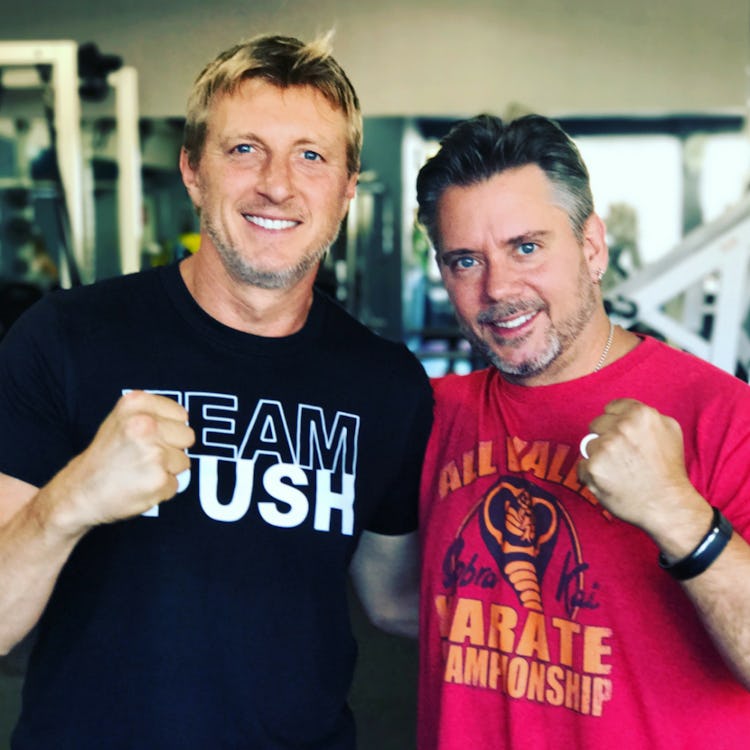
To be clear, you’re NOT recommending this to people who just want to look good on the beach.
Right. It’s not pleasant and I don’t recommend doing it by yourself either. Dehydrating yourself is dangerous—you can pass out in that bathtub. You need to have somebody watching you. But that’s what we do when somebody has to be naked on camera for a movie. The stakes are pretty high, so you have to be willing to do things you wouldn’t do in everyday life. But no, I wouldn’t use this process to look good for a wedding or a beach party. You might look great but you’d feel miserable.
Watch Cobra Kai, available exclusively on Netflix, and visit Landers at pushprivatefitness.com.
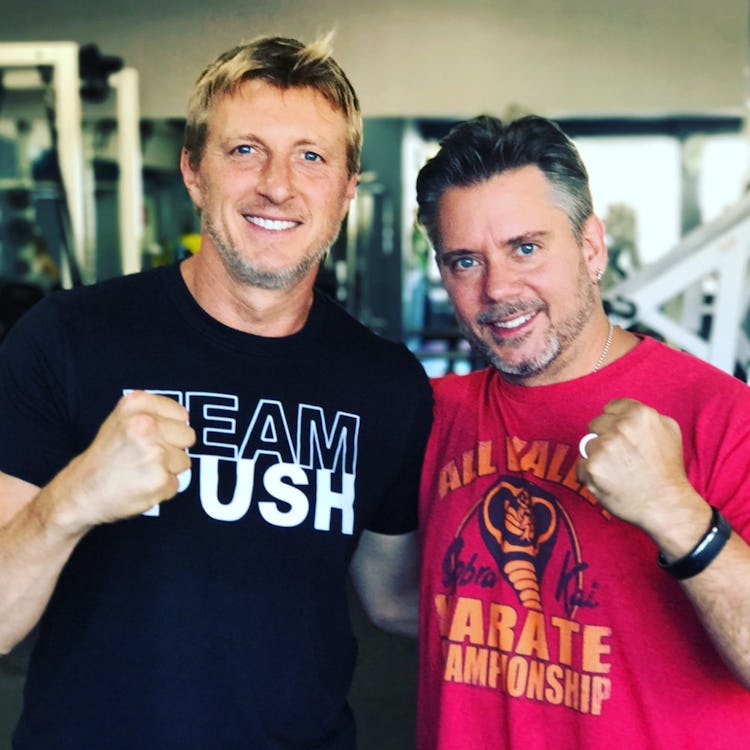
)
